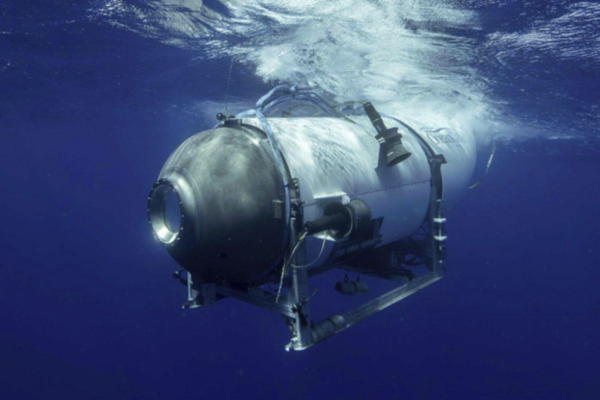On June 18th, a submersible vessel named Titan imploded while descending in the northern Atlantic Ocean about 400 nautical miles from the coast of Newfoundland, Canada. The vessel was carrying five individuals and was en route to observe the Titanic shipwreck when, about 1 hour and 45 minutes into the dive, communication with the vessel was lost. After failing to resurface, authorities were alerted and an extensive and collaborative search ensued. The collaboration included the US Coast Guard, US Navy, and Canadian Coast Guard. There was additional support from the Royal Canadian Air Force, the US Air National Guard, as well as a multitude of other governmental, commercial, and research vessels. About 80 hours into the search, Horizon Arctic’s remotely operated underwater vehicle (ROV) called Odysseus 6k discovered a debris field consisting of parts of the Titan vessel about 12,500 ft below sea level and approximately 500 meters from the bow of the Titanic.

Photo by AP Alamy Live News
Separately, after the Titan was reported missing, the US Navy reviewed its underwater acoustic data from that time period and discovered that the acoustic detection system had picked up a signature consistent with implosion. Based on current information, it is likely that there was a failure of the vessel’s pressure hull, resulting in implosion and the instantaneous death of the five occupants. Experts suggest that any defect would have caused “near instantaneous implosion” in less than 40 milliseconds. It is uncertain at what depth the implosion occurred, but if the submersible successfully made it to the depth of the Titanic wreckage, the vessel would have been experiencing around 6,500 psi. In 1963, a similar disaster occurred when the USS Thresher imploded when it exceeded “test depth” after a series of other failures; 129 sailors and civilians were killed during the disaster.
Titan was operated by OceanGate Inc, a private company that has transported paying clients in submersibles in the Pacific, Atlantic, and Gulf of Mexico since 2010. Titan was built primarily from titanium and carbon fiber, measured 22 ft long, and weighed 23,000 lbs. The structure consisted of two titanium hemispheres connected by a 7.9 ft carbon fiber cylinder. One of the hemispheres was capped with a 15 in acrylic window. Titan could move at 3 knots (3.5 mph) using two horizontal and two vertical thrusters. The vessel contained monitoring systems to continuously monitor the strength of the hull as well as on-board life support to sustain the five occupants for 96 hours.
While this unfortunate incident was due to an implosion, there are a myriad of other objective risks inherent to deep sea missions, both medical and otherwise. Diving medicine, also known as undersea and hyperbaric medicine (UHM), is concerned with prevention, diagnosis, and treatment of conditions experienced by humans underwater. These conditions include decompression sickness, pulmonary barotrauma, arterial gas embolism, nitrogen narcosis, oxygen toxicity, among others. Hyperbaric medicine is a related field, as hyperbaric chambers are used to treat some diving-related illnesses such as arterial gas embolism and decompression sickness. The mainstay treatment of hyperbaric medicine is hyperbaric oxygen therapy (HBOT), the use of oxygen at an ambient pressures higher than atmospheric pressure. This therapy physically reduces the size of injurious systemic gas bubbles and provides conditions for the elimination of excessive dissolved gas. Additionally, hyperbaric medicine can be used to treat a host of other medical conditions such as carbon monoxide poisoning, gas gangrene, and central retinal artery occlusion. There is ongoing research examining whether HBOT may be effective in treating other diseases such as multiple sclerosis and cerebral palsy.
There are currently multiple large investigations underway to uncover details leading up to the unfortunate implosion of Titan and to prevent future such tragedies.